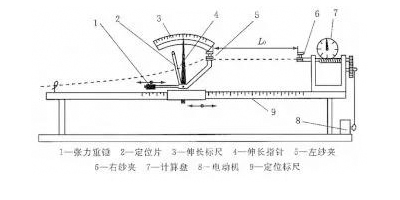It needs for twisting when you spinning short fibers into continuous yarns.They keep the aggregate force when they stay together, then gives the strength of yarn. Filament in composite filaments also requires mild twisting. It will be dislodged or scratched in use if they are not tied together. In addition, according to various kinds of applications, plurality of single yarns can be combined and twisted to become plied yarns and cables, to make them keep uniform and stable for sustaining higher load. When at least two yarns twist with different speeds and tensions, or twist with different colors or fancy yarns, they can form fancy yarns. Twisting is a method of bringing bundle fiber, filament yarn, and single yarns together. It can help textile bears force, change and rub in production and in use. And gives textile fresh appearance.
1.Concept of Twist
As well as affecting the tensile performance of the yarn, the twist also will affects the diameter, specific volume, softness and stiffness of yarns, affecting the covering performance, heat retention, crease recovery, dyeing rate and permeability of the textile. It also affects the hairiness of the yarn surface. Twist is an important indicator of the structural characteristics of the yarn.
In addition to the twist and twist multiplier can be expressed, the twisting direction of the yarn is also important. It refers to the tilting direction of the yarn when adds twist. There are two types of twist: S-plied(twist to the left) and Z-plied(twist to the right). Most manufactured single yarns are spun with a Z twist.To ply these Z-plied together, they are twist with an S twist to give a balanced plied yarn.
2.Methods of Twist Testing
There are 2 commonly testing methods: direct counting method, Untwist-retwist method. The short fibers and plied yarns commonly use the direct counting method, while the spun yarns use Untwist-retwist method. Besides, they are Double untwist-retwist method, Double untwist-retwist method and Sliding method.
(1.)Direct counting
Fixed the one side of sample,another one at one rotating direction of untwisting.When the fibers in the yarn are completely parallel, and the degree of retraction is the number of turns of the length on this sample.It doing test under the premise of the same of yarn elongation after untwisting is and the shortening distance of yarn. A typical test device was shown.

3.Influencing Factors of Twist
Pre-tension
There are different regulations at domestic and overseas for the pre-tension of the Untwist and Twist Method. Excessive pre-tension will make the pointer clearing slowly when it do reverse twist. Whereas, too small pre-tension reduces relatively, and value will be down when it do reverse twist. On Sliding method and untwist-retwist method, for reduce the error of pre-tension, they adopt the method of subtracting the error of the two samples.
Allowable Elongation Value
The sample is elongated after untwisted, and the allowable elongation value set by the elongation limit prevents the slip of the yarn during the untwisting process. Experience shows that if the allowable elongation value is large, the twist value will be larger. And on the weak site of yarn will slid and affects the correctness of the experiment obviously.The allowable elongation value is related to the twist coefficient. The larger of the yarn twist coefficient, the larger the allowable elongation value; otherwise, the smaller. Usually, the yarn twist coefficient is not vary widely, so the difference in elongation value is not allowed to be too large.
Yarn and Sliver Unevenness
Yarn and Sliver Unevenness will effect the test result of the twist. If there are neps, bamboo knots, etc. on the yarn, the original twist on the yarn will not be reversed during the untwisting process, and the reverse twist will be started, which will increase the test error. If there is a long piece of unevenness on the yarn, it will affect the correctness of the added tension and eventually cause additional test errors.
4.Test Device
